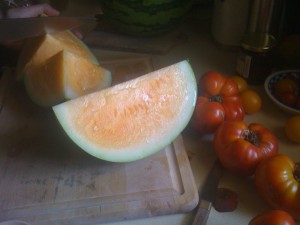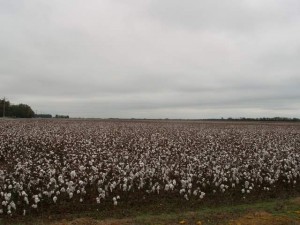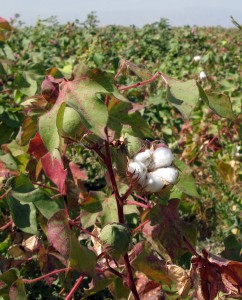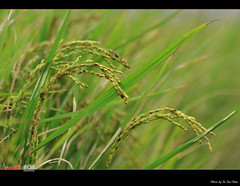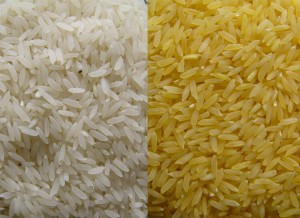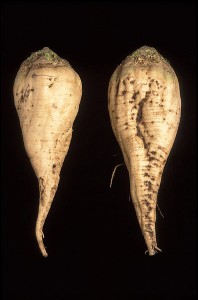Some traits are easy to select for. It’s easy to tell which plants have a gene that turns them purple, or one that turns a single stalk of corn into a, for lack of a better word, corn bush. (links) When I was an undergrad some of the world I did was with a gene that (when it wasn’t knocked out by a transposon) turned corn kernals dark purple. Traits like that one (the R gene) that can be identified just from looking at a seed are the easiest of all.
Other traits are not so easy to select for. How do you pick out which plants in a row carry a gene variant that increases yield by 6%. Or worse yet, yields 6% more under drought conditions, but has no effect otherwise? For improving crops a plant breeder will need to track gene variants for many generations under in all sorts of growing conditions.
The solution, made possible by modern genomics and molecular biology, is to use differences in the genetics code between individuals in the same species to track what what happens to different pieces of DNA from one generation to the next.
Today a plant breeder can take a piece of leaf from every plant in his field, and find out a huge amount about which parts of their genomes they inherited from which parents. So even if it’s not a dry year, he or she can still tell which plants carry the gene variant previously identified as better surviving drought. A breeder can check for dozens or hundreds of of different genes in each plant from that same small piece of leaf.
Some companies are even setting up systems to scrape little pieces off of individual corn kernals and do the same kinds of analysis. Then only the kernals with promising combinations of gene variants are planted, either further study or breeding with other kinds of corn carrying other promising traits identified and mapped by breeders.
The system can also work to discover useful new traits, something called quantitative trait mapping. A bunch of plants that are the mixed descendants of two known breeds are measured for some trait, for this example let’s use flowering time. The same plants are also analyzed using known genetic varations between their two ancestors to see which parts of their genomes come from which of the ancestral breeds. A region of the genome that contains a gene that effects flowering time will show a pattern. More of the plants which flower earliest will have inherited that region from one of their ancestors, and more of the plants which flower later will have inherited that region from the other ancestor. Regions of the genome what don’t contain genes that have an effect on when plants flower will be randomly distributed between the earlier and later flowering plants
Doing some complicated math that I don’t even want to think about can reveal regions on individual chromosomes which contains genes that control flowering time. Depending on how much they’re able to narrow the region down, breeders will often use the regions they identify (called QTLs: quantitative trait loci) to bread improved crops without ever having to identifiy the exact gene responsible. (And flowering time can be important for breeders, for example when adapting a breed of soybeans grown in Georgia to be grown in North Dakota, a breeder will want to select for soybeans that flower faster because the growing season is shorter farther north.)
Some traits are easy to select for. It’s easy to tell which plants have a gene that turns them purple, or almost any of the mutants seen in the mutants of corn garden at cornell. When I was an undergrad some of the world I did was with a gene that (when it wasn’t knocked out by a transposon) turned corn kernals dark purple. Traits like that one (the R gene) that can be identified just from looking at a seed are the easiest of all.
Other traits are not so easy to select for. How do you pick out which plants in a row carry a gene variant that increases yield by 6%? Or worse yet, yields 6% more under drought conditions, but has no effect otherwise? For improving crops a plant breeder will need to track gene variants for many generations under in all sorts of growing conditions. (more…)
